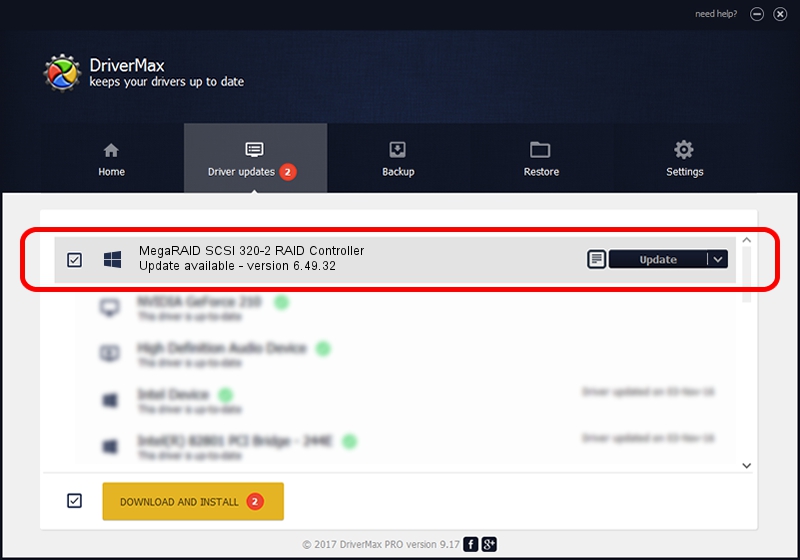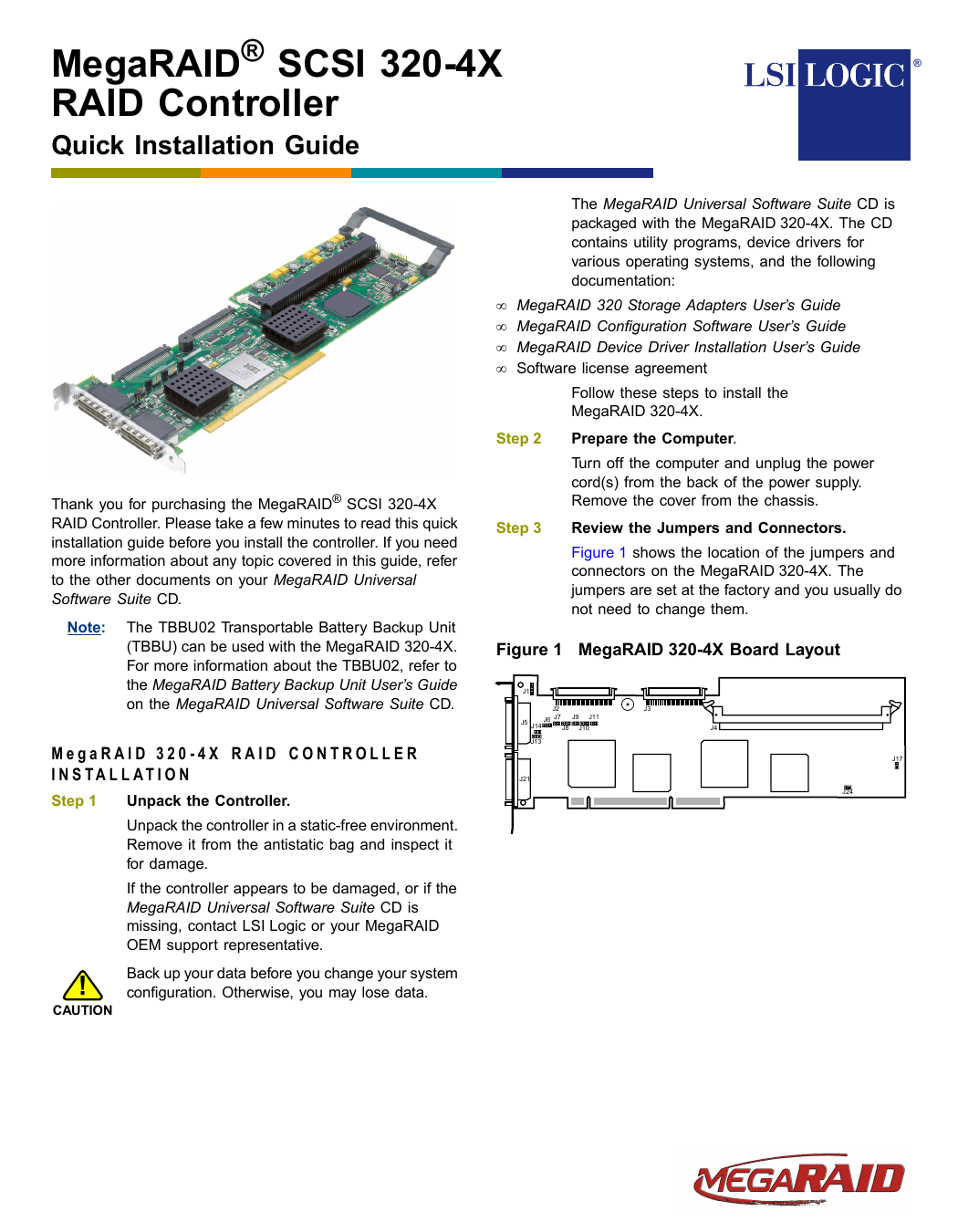To access virtual disks, CD/DVD-ROM, and SCSI devices, a virtual machine uses storage controllers, which are added by default when you create the virtual machine. You can add additional controllers or change the controller type after virtual machine creation. You can make these changes while you are in the creation wizard. If you know about node behavior, controller limitations,.
- Lsi Scsi & Raid Devices Driver Download For Windows 8.1
- Lsi Scsi & Raid Devices Driver Download For Windows 10
Speed
The LSI Logic adapter has improved performance and works better with generic SCSI devices. The LSI Logic adapter is also supported by ESX Server 2.0 and higher. Keep this in mind if you plan to migrate the virtual machine to another VMware product. Your choice of SCSI adapter does not affect your decision to make your virtual disk an IDE. I use Dell PowerEdge T320 server with 3 x 900GB, SAS 6Gbps, 2.5-in, 10K RPM in RAID 5 (Perc H310 RAID controler - Microsoft Windows Server 2012 R2, Standard x64 Edition). After replace problematic hot plug disc and successful rebuild my Virtual Disk0 state is ready and all 3 disks are online.
Integrated LSI 1068 SAS/SATA 3.0Gb/s controller supports RAID 0, 1 Optional PERC 5/i PCI-e RAID card supports RAID 0, 1, 5, 10 Integrated Broadcom® 5752 Gigabit 8 Ethernet controller Integrated High Definition Audio (Rev 1.0 Specification) with Sigmatel STAC9200 High Definition Audio CODEC and Intel ESB2’s AC97/ High Definition digital. SCSI driver Included with VMware Tools is the VMware Paravirtual SCSI driver for use with paravirtual SCSI devices. Drivers for other storage adapters are either bundled with the operating system, or they are available from third-party vendors. For example, Windows Server 2008 defaults to LSI Logic SAS, which.
Throughput is the amount of data that can be moved, processed, or read and written in a certain amount of time. To measure drive speeds, drive throughput is benchmarked, or tested. (IOPS may also be measured; throughput and IOPS results often suggest the same things about a drive.) The throughput of SAS drives is usually higher than that of SATA drives; there are simply fewer delays in general. However, there is some overlap between slower SAS drives and faster SATA drives.
The number of revolutions per minute (rpm) that a drive can perform affects throughput. Several factors affect drive speed on the whole, but generally the higher the rpm, the faster the drive's throughput and similar performance functions will be. Most consumer-level SATA-based drives operate at 5400 rpm and up to 7200 rpm, while most SAS-based drives operate between 7200 rpm and 15000 rpm.
This difference in speed is most noticeable when handling large files. A 15000 rpm SAS drive will most likely read and write a 500GB file faster than a 7200 rpm SATA drive will.
The data transfer rates of hard drives are also closely related to the type of connector used, whether it is SATA or SAS. A SATA cable transfers data at a rate of about 150MB/s, compared to SATA-II's 300MB/s, and SATA-III's 600MB/s. SAS cables traditionally transferred data at up to 600MB/s; newer versions can transfer up to 1500MB/s.
Storage Capacity
SAS prioritizes speed over storage. Accordingly, the vast majority of SAS drives that are sold have fewer than 500GB of hard disk space. Those with over 500GB of space can be very expensive. In contrast, SATA prioritizes storage, so finding an affordable SATA drive with 1TB or more of space is easy.
Reliability
A significant difference between SAS and SATA is that SAS is engineered to withstand 24/7 use in enterprises, such as datacenters. While a SATA drive could technically be used in all the same ways that a SAS drive could be (e.g., for a server), it would perform more slowly and would be more likely to fail (or suggest failure—give a false positive—even when it has not technically failed). This is a costly problem for businesses that depend on reliable hard drives. The mean time between failures (MTBF) for a SAS drive is 1.2 to 1.6 million hours of use at 45 °C, while the MTBF for a SATA drive is 700,000 hours to 1.2 million hours of use at 25 °C.
It is possible to have a hard drive last for several years, regardless of the tasks performed on it; all performance and reliability statistics exist on a bell curve, with some drives performing better or worse than others. Brand may also matter when hunting for the most reliable drive, be it SAS or SATA. In 2013, the backup service Backblaze analyzed the reliability of three popular hard drive brands: Hitachi, Western Digital, and Seagate. Hitachi and Western Digital were the most reliable over time, while nearly 30% of Seagate drives failed after three years of use.
Power Consumption
SAS uses more power than SATA does, which allows it to support server backplanes and have longer cables. A SAS drive uses at least two times as much signaling voltage as a SATA drive does.
Prices for SATA and SAS drives
As of January 2016, a 1TB 7200 rpm SAS drive goes for about $100 on Amazon. e.g. $97 for a 1 TB SAS drive. The SATA equivalent is about 10% cheaper at $87.

Prices usually increase according to the amount of storage space available. For example, the 2TB version of the same hard drive costs $146 for SAS and $114 for SATA.
Uses/Applications
Personal Computing
While both SATA and SAS drives can be used in personal computing, most small business offices and personal setups will not make regular use of SAS' data transfer capabilities. Sacrificing the storage space of a SATA drive, which typically has at least twice as much hard disk space as a SAS drive for a fraction of the cost, will not be a good trade-off in most all cases.
Servers
When it comes to serving up web pages on a web server or hosting games on a game server, SAS is the superior choice because of its low failure rate and high-speed data transfer capabilities.
Video Explaining Uses
The video below talks further about how SAS and SATA are used.
SATA and SATA Revisions
One point that may cause confusion is the fact that there are actually different kinds of SATA drives: SATA revision 1, SATA revision 2, and SATA revision 3 (and 3.1 and 3.2). With each revision, standards have risen, particularly when it comes to transfer speeds. A SATA drive has a potential transfer speed of 150MB/s compared to a SATA III's potential 600MB/s. As such, those who want the affordable storage capacity of a SATA drive, but also crave the speed of a SAS drive, should purchase a SATA III / SATA revision 3 drive with a high rpm.
Watch the video below to learn more about the history of SATA and how the latest versions of SATA compare with SAS.
Lsi Scsi & Raid Devices Driver Download For Windows 8.1
Cables
SAS and SATA cables have two ends, one to connect to a drive and one to connect to power via the motherboard. (Hard drives also connect directly to power with a separate cable.) Because of their higher voltage, SAS cables can be up to 10m (33ft) long, while SATA cables can only extend up to a meter (3ft) in length.
SAS cables vary considerably in length and purpose, but most modern SAS cables have 26 to 36 pins and are powerful enough to support multiple devices and backplanes. There are internal and external SAS cables, extension cables, and even cables that will hook SAS controllers to SATA devices.

Meanwhile, SATA's data connector has seven pins, or conductors: three grounds and four active data lines. At the opposite end of the cable, SATA's power connector is much wider and has 15 pins that supply electricity to the drive, ground the cable, and support drive spinup.
SAS is backward compatible with SATA-II and SATA-III, while SATA drives are not backward compatible with SAS.
Lsi Scsi & Raid Devices Driver Download For Windows 10
References
